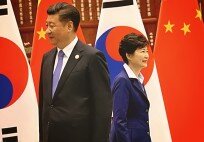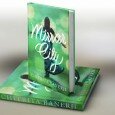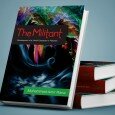By Nadeem Alam –
Anna Molka Ahmad: A Woman of Substance
Anna Molka Ahmad, the founder of academic Art in Lahore in the shape of Fine Arts Department at the University of the Punjab Lahore in 1940, was not only an artist but had other potentials as well. When Pakistan emerged on the face of this globe as a sovereign state in 1947, Anna Molka Ahmad played her part in more than one capacity, as a pioneer of an academic art department, as an educationist, as a painter and as a sculptor.
She had, at that time, the responsibility of not only preserving and documenting indigenous styles of painting, but introducing and developing modern styles, techniques and genres to the first ever generation of academic artists of Pakistan. Therefore, she tried to put her hands on almost all fields of visual arts; ranging from painting to sculpture.
Apart from an artist or a painter, Anna Molka Ahmad was a woman of substance who, against all odds and against unfavorable circumstances, stood steadily with all her strength and courage. She was alone with the responsibility of two small daughters in a country that was not her home by birth. However, she never looked back and not only established her place as an artist, but also as an accepted and respected individual who was alien to this society at the beginning, and who actually earned the status of the ‘Mother of Artists’ in Pakistan.
In recognition of Anna Molka Ahmad’s professional contribution and academic services, the government of Pakistan conferred upon her, Tamgha-i Imtiaz in 1963, the Pride of Performance in 1979 and Quad-i Azam Award in 1982. Her roles as an artist, administrator and educationist, have remained unparalleled.
Anna Molka Ahmad with an awakened conscience responded to humanistic topics and the agonies of humanity. She painted on topics that were related to War, Famine, Science, Religion, Society and Nationalism. She also encouraged her fellow faculty members and contemporary artists. Anwar Afzal, Razzia Feroz, Naseem Hafeez Qazi and Khalid Iqbal are such few names who are considered as the pioneers and shape-makers of art in Pakistan with their individual capacities as art academicians and painters.
It was Anna Molka, who encouraged Khalid Iqbal to convert his passion of painting into a thorough professional attitude, and to introduce the patterns of ‘Modern Realism’ in landscape painting of Pakistan. She, not only encouraged the female students to opt fine arts as their academic and professional objective, but also persuaded boy-students to take this relatively new subject seriously as their career. These efforts resulted in; to induct the first ever batch of boys-students in 1956 when Sufi Waqar, Aslam Minhas and Colin David were admitted to the department and Khalid iqbal was given the responsibility to teach them. Later, Ghulam Rasul, A. R. Nagori and Zulqarnain Haider emerged as prominent painters under vision and appreciation of Anna Molka Ahmad.
The encouragement and practical efforts of Mrs. Ahmad helped Khalid Iqbal to shape himself as the most revered and accomplished landscape painter of all times in Pakistan while Colin David earned the venerated place among the figurative artists.
Along with academic and administrative responsibilities, Anna Molka Ahmad never overlooked her role as an artist. She kept on painting and sculpting endlessly, covering various subjects and themes. Other than her paintings of national heroes, her excellence of expression got a vent through the harder medium of sculpture as well. She molded busts and heads of notable personalities like Quaid-i Azam, Sufi Tabassum (a well-known poet), Mian Afzal Husain (the first Muslim Vice Chancellor of the Punjab University Lahore) and Mr. Moti Lal. These heads and busts could be considered as the trendsetter of the Pakistani Art in this genre and the first-ever independent sculpture-pieces of Pakistani Art.
Anna Molka Ahmad is labeled as an expressionist in her technique with impastoed colours, normally applied directly from the containing tube on the canvas and mixed with a knife rather than brush. This style shows the energetic and passionate approach of the painter. Contrary to her western technique, Anna Molka Ahmad adopted local themes and subject matter for her paintings. She is among the first painters who in her cityscape paintings explored the social, anthropological and architectural patterns of the Walled-city Lahore. Moreover, she also rendered the buildings of the colonial era such as the Lahore Museum, Punjab University Old Campus and her residency at the Queens Road.
Anna Molka Ahmad is undoubtedly a torchbearer in the evolution of art in Pakistan. She not only introduced new ideology, themes and techniques of art to the post-partition Pakistan, but also amalgamated the indigenous visual dialect with the international accent of visual art.
The writer teaches Art History at the Punjab University College of Art and Design, Lahore. He can be reached at [email protected]































































































